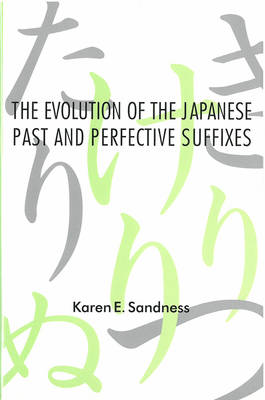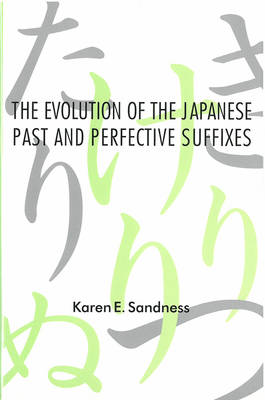
- Afhalen na 1 uur in een winkel met voorraad
- Gratis thuislevering in België vanaf € 30
- Ruim aanbod met 7 miljoen producten
- Afhalen na 1 uur in een winkel met voorraad
- Gratis thuislevering in België vanaf € 30
- Ruim aanbod met 7 miljoen producten
Zoeken
€ 41,95
+ 83 punten
Omschrijving
The inflectional morphology of the classical Japanese of the Heian period (794-1185) is markedly different from that of modern standard Japanese. In particular, five temporal and aspectual suffixes, -ki, -keri, -ri, -nu, and -tu, have disappeared, and a sixth, -tari, has evolved into the modern past and perfective suffix -ta. This study documents the changes in these six suffixes by examining their usage in literary works from the Heian period through the Kamakura period (1185-1334) and most of the Muromachi period (1114-1615).In her work, Karen E. Sandness succeeds in (1) presenting an internally consistent and workable analysis of classical Japanese suffixes, (2) explaining the evidence for the evolution and disappearance of these suffixes, and (3) pointing out the ways in which the dialectological and literary evidence support and contradict each other. The Evolution of the Japanese Past and Perfective Suffixes is important reading for those interested in Japanese language and linguistics. It will also aid scholars and students in reading and understanding various aspects of classical Japanese.
Specificaties
Betrokkenen
- Auteur(s):
- Uitgeverij:
Inhoud
- Aantal bladzijden:
- 274
- Taal:
- Engels
- Reeks:
- Reeksnummer:
- nr. 26
Eigenschappen
- Productcode (EAN):
- 9780939512928
- Verschijningsdatum:
- 18/10/1999
- Uitvoering:
- Hardcover
- Formaat:
- Genaaid
- Afmetingen:
- 159 mm x 235 mm
- Gewicht:
- 498 g

Alleen bij Standaard Boekhandel
+ 83 punten op je klantenkaart van Standaard Boekhandel
Beoordelingen
We publiceren alleen reviews die voldoen aan de voorwaarden voor reviews. Bekijk onze voorwaarden voor reviews.











